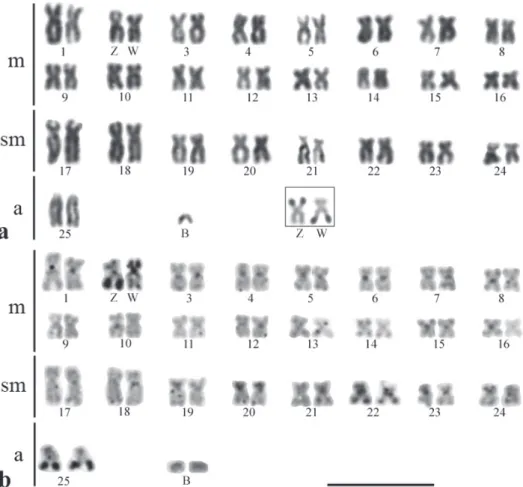José Carlos Pansonato Alves, Luiz Ricardo de Souza Paiva, Claudio Oliveira and Fausto Foresti
Texto
Imagem




Documentos relacionados
FISH with the 5S rDNA probe showed that the speci- mens from the Paraitinguinha river presented 5S rRNA genes at interstitial positions of five chromosomes (pairs 1 and 6 and
Besides these three distinct karyotypic forms, the occur- rence of a specimen from the rio Cará-cará exhibiting 2n=49 chromosomes with 7 being metacentric, 18 submetacentric,
There were significant differences among populations within each species and among species in the number of metacentric, submetacentric and subtelocentric chromosomes, the number
This is composed of two pairs of submetacentric chromosomes with different sizes in the karyotype with 2n = 16; in animals with 2n = 14, it presents a large metacentric homozygous
Cytogenetic analysis of Trichomycterus areolatus , collected from the Tijeral and Huilma Rivers in southern Chile has shown a diploid chromosome number of 2n = 54, a fundamental
Analyzing the species that show a diploid num- ber of 14 (2n = 14), we observed that the most frequent forms for the X chromosome were small metacentric and small submetacentric
The presence of a heteromorphic pair of submetacentric chromosomes in the analyzed specimens, not present in males and females with 2n = 50 previously reported, and
As doenças mais frequentes com localização na cabeça dos coelhos são a doença dentária adquirida, os abcessos dentários mandibulares ou maxilares, a otite interna e o empiema da